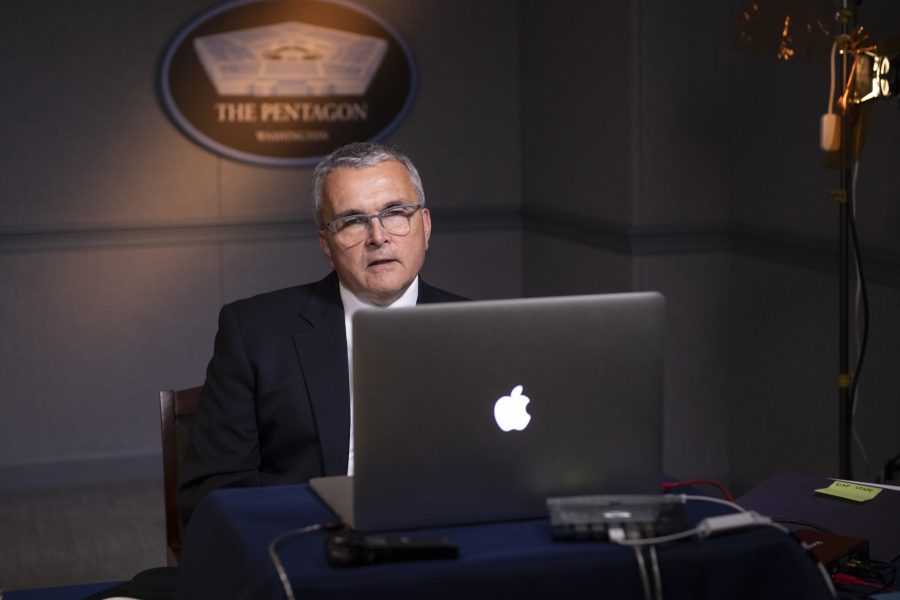President Joe Biden hasn’t named his Air Force Secretary pick yet, or someone to serve as assistant secretary for space acquisition and integration. But when they arrive, they’ll need to hit the ground running.
Once a new Secretary is nominated, Deputy Assistant Secretary of the Air Force for Space Acquisition and Integration Shawn J. Barnes and other assistant secretaries will begin bringing them up to speed on the broad ideas needed to get through the confirmation process. Then once the new Secretary is approved and sworn in, they’ll receive more detail on the issues facing the Air Force and Space Force.
“There are no shortage of briefings and binders that are being prepared for incoming staff at all levels,” Barnes, who is performing the duties of the assistant secretary while the Air Force awaits a Senate-confirmed nominee, told reporters Jan. 27. “We’ve got some standing continuity documents that we would start from.”
He said his first priority at the moment is successfully bringing on those political appointees as more open positions are filled. That includes the Air Force Secretary, the assistant secretary for space acquisition and integration, and certain other USAF assistant secretary jobs, as well as some posts in the Office of the Secretary of Defense.
“We’ll need to keep them apprised of what’s going on and the work that this office has been doing,” Barnes said of the Air Staff.
Barnes won’t speculate on what priorities his Senate-confirmed successor might hold, but believes transferring space procurement responsibilities to a new acquisition executive will be their “no-fail mission.”
“I can’t have that transfer … and drop the ball,” he said.
Barnes hopes to pave the way for a smooth transition to a space acquisition executive in October 2022. Right now, development and purchases of space assets still fall under the Air Force procurement boss instead of a space-specific position. Congress created the new post despite pushback from some in the Air Force to keep all acquisition programs under one decision-maker.
“We’re working very closely with SAF/AQ to determine what sorts of capability and capacity that this office will need, in terms of people, in terms of facilities and networks and clearances and all those kinds of things, so that we can do that service acquisition executive job once that responsibility moves over,” he said.
They are likewise considering what authorities and relationships the assistant secretary will need to work best with commercial companies driving to a boom in new space innovation, as well as ally and partner countries.
“Fundamentally, that integration has a similar theme, which is we’re trying to expand on our overall set of capabilities that we can call on, whether that’s a service that we purchase, or it’s a service that we rely on by an ally,” Barnes said. The specifics of how you would do that with a commercial company is very different than the specifics of how you would do that with a close ally.”
The Air Force’s space integration team will also inherit the work of finishing ongoing and future acquisition and personnel reports to Congress, including one detailing the space aspects of broader procurement reforms underway in DOD.
“I have started to work with the folks in the [Pentagon acquisition and sustainment office] on this,” Barnes said. “We’re working with [the Air Force acquisition branch] and we’ll work with the Space Force to pull that together. I do not see it as a significant hurdle to be able to accomplish that report in the timeframe that’s required—I believe it was mid-May.”
Barnes told reporters in December he would continue doing the top job “into the May timeframe” as well, though Biden could nominate someone to take over before then.
“If the administration nominates and [the] Senate confirms someone earlier, there will be no one happier than me, and I can move into the deputy position by being the deputy, and not being both the deputy and performing the duties of [assistant secretary],” he said.
